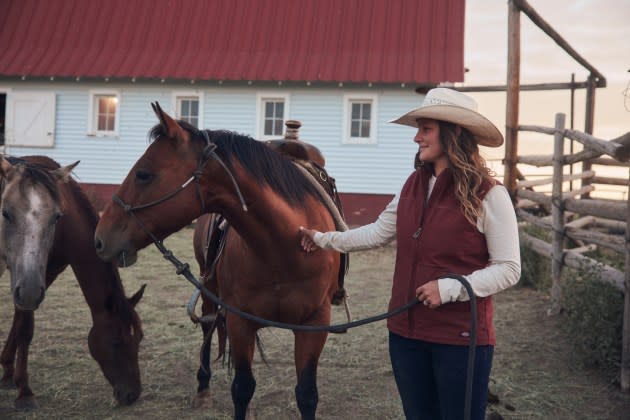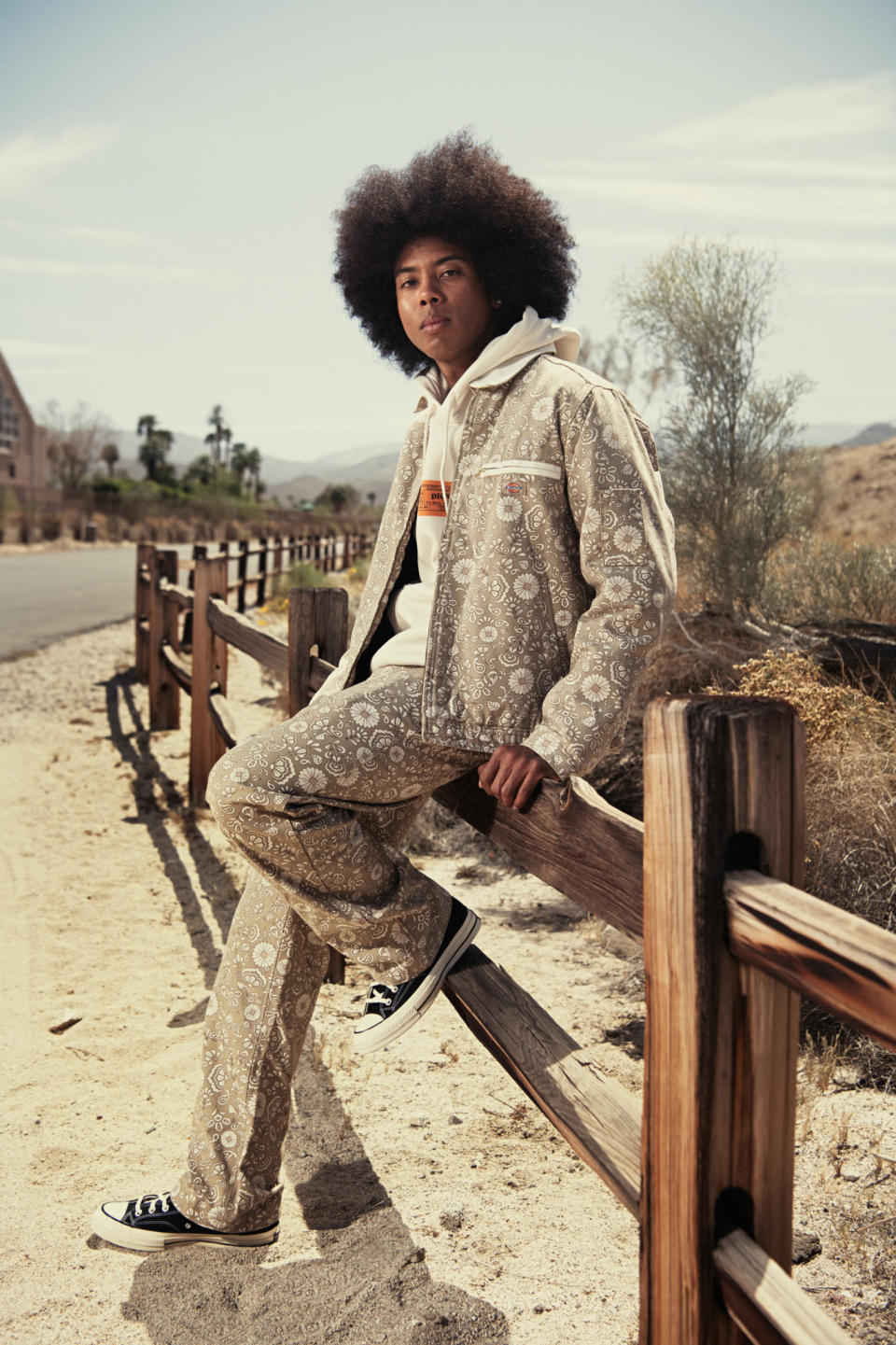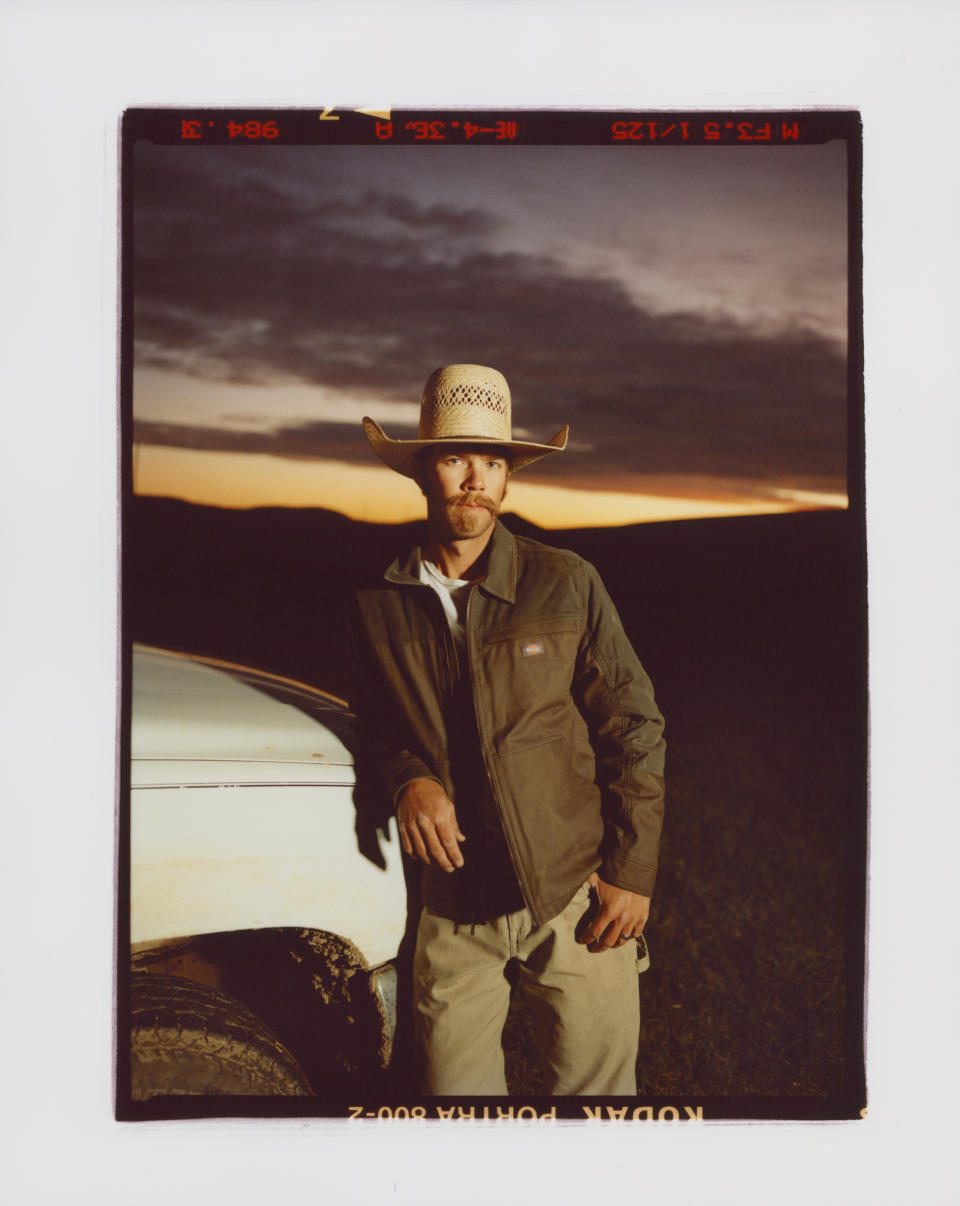Dickies Chief to Bring the Brand Back to Its Workwear Roots

On paper, Todd Dalhausser’s background is mainly in footwear. His résumé includes Saucony, Reebok, Vans, and most recently, Altra.
But Dalhausser, who was named global brand president of Dickies in April, is quick to point out that he was actually responsible for apparel at most of his past jobs.
More from WWD
That puts him in good stead to oversee Dickies, which has a 101-year history as a workwear brand.
In his new role, the industry veteran has been charged with getting the venerable brand back on a growth trajectory for its parent, VF Corp., which owns both Dickies and Altra.
In the first quarter of fiscal 2024, sales for the Dickies brand were down 20 percent to $136.6 million. That comes on top of a 13 percent drop in sales to $725 million for fiscal 2023.
As he settles in to his new job, Dalhausser has a clear vision on what needs to be done. In a nutshell, he plans to bring Dickies back to its roots and stop chasing the fickle lifestyle customer who has embraced the brand of late. In addition, the number of styles will be dramatically reduced.

“Six months ago, I was asked to consider moving over to the Dickies brand and joining the executive leadership team at VF,” he said. “Most of my background is working at footwear brands on the apparel business. So I would say I have as much, if not more, experience on the apparel side than I do footwear.”
So when he was approached by VF to make the jump from Altra, a running shoe brand, he never hesitated. “It’s not every day you have an opportunity to join a 100-plus-year-old brand — and a brand that is incredibly authentic and still true to its original foundation,” he said. “Opportunities like this don’t come along very often, maybe once in a career.”
He pointed out that at the company’s headquarters in Fort Worth, Texas, there is an extensive archive where many historical pieces are kept. “You can open a drawer and see an 80-year-old piece of apparel that was originally built for work. And to still stay true to that today is absolutely amazing.”
Williamson-Dickie Mfg. Co. was founded by cousins C.N. Williamson and Colonel E.E. Dickie in 1922 as a denim bib overall company selling to farm and ranch hands around the Southwest. And not much has changed since then, the company proudly boasts on its website: “While we’re now the number-one work apparel manufacturer worldwide, we’re not all that different from when we began. We still make bib overalls. We still embody the spirit of the American worker.”
Like it was in 1922, Dickies still focuses on creating products with protection, comfort and performance attributes.
“What we do every day matters to our consumer, I’m super passionate about that,” he said. “They rely on us. For this consumer, it’s about providing for their families. It’s their livelihood. They expect that product to stand up to the rigors and the climate and whatever.”

Dickies has always been committed to that customer, but over the years, it has also been embraced by the fashion community. “In the ‘80s and ‘90s, we had a huge movement around rap and rap culture,” he said. “We were deemed the uniform — they had to have the work shirt and the 874 pant. And then skate was a huge movement for us because the pants were incredibly durable and they were super affordable for the mom and dad. You could go through five pairs of 874s and not break the wallet. So it was the perfect recipe.“
Dickies is also popular with Gen Z consumers today, who will sport its work pants, shirts and jackets on city streets as a style statement.
But for Dalhausser, that part of the business was getting too much attention internally. “With those moments of appropriation around lifestyle, we wandered a little bit off of center of the core — the worker,” he said. “So we’re going to shift back a little bit more to center and really focus around that core. We’re going to put ‘work-inspired’ on the top of the pyramid. The volume is relatively small, but there’s a halo effect around youth culture that is important to us. But our foundation is work.”
He segmented Dickies’ target customer into two buckets: the indoor worker — someone in the service, janitorial or transportation industry — and the outdoor worker, or someone in agriculture or construction.
By concentrating on providing these people — particularly those who work outside — with products that fill their needs, “we will bring the brand back to a growth trajectory,” he predicted. “Our aided awareness with consumers in the work space is highest among all the brands. Those outdoor workers know who we are. We just have to build the right product for them.” So whether it’s bug or sun protection, “that’s what innovation means in the work space,” he said.
Key to that is to instill a new way of approaching its product offering. “We have to start to think like a retailer,” he said. “We are a brand founded around what we refer to as icon products — the work shirt, the 874 pant, the Eisenhower jacket — those are historical icons that we’re incredibly proud of. But they’re all individual items. We have to think more about seasonal flow within deliveries. So let’s take those iconic products and build collections around them. But believe it or not, that’s not a muscle that currently exists within Dickies, so it’s a pretty significant shift that we’re going to make.”
Although it sounds like there will be more products offered, Dalhausser said the brand is actually going to reduce its stock keeping units by 50 percent. He said Dickies “just took our eye off the ball” by focusing so much on lifestyle product, “driving a tremendously long tail of product skus. So we’re going to get back to greater efficiency and be more meaningful to the end user every day.”
That’s not to say that Dickies will be completely abandoning the lifestyle consumer, but it won’t be a primary focus in the future. “We have a huge amount of high school kids who are buying our overalls and painters’ pants and customizing them. That is fantastic. But we don’t need to cater to it. We don’t need to market to it. We’re going to allow that to organically happen, because those moments are going to ebb and flow as trends do.”

Although Dickies may be thinking more like a retailer, it only operates five of its own stores around the U.S. with most of its distribution coming from mass merchants like Walmart and Fred Meyer as well as farm-and-ranch, grocery and hardware stores in rural communities.
“We’re in 4,000 Walmart stores and we’re incredibly proud of our partnership,” he said. “We told them we want to be a sustainable growth partner going forward.”
The brand also has a strong presence online with Amazon and Zalando as well as its own website.
Direct-to-consumer will be a major focus in the future, Dalhausser said, because it’s the best way for the brand to tell its story. “It’s our number-one vehicle for communication with consumers. Should they choose to shop with us or not is their prerogative, but we’re going to be able to answer any questions they may have. So showing up in any of those different distributions and communicating the right messages around our product is as important as the experience we provide on our own website.”
Dickies is also going to target more women in the future. Dalhausser said with indoor workers, the customer breakdown is pretty much even between men and women, but outdoors, it’s 80 percent male. To change that, the brand is partnering with the National Association of Women in Construction and other groups to create connections.
Much like its primary competitor, Carhartt, Dickies is also trying to spread the word that a career in the trades is a viable option. “There’s a real shortage of skilled workers in the United States right now and we’re a perfect brand to show them a path.”
Outside of that, Dalhausser is also working to reduce inventory, which got a little heavy following the pandemic. “There’s not a panic, but there’s an urgency to move through this as quickly as we can.”
Earlier this summer, Dickies opened a new headquarters in Fort Worth, a 65,000-square-foot space with a modern design but with visual elements that pay tribute to the brand’s history.
Dalhausser said until the move, Dickies was still in its original space, a factory just outside downtown Fort Worth that was owned originally by the Williamson family. “It was an almost 100-year-old building and it wasn’t built as a professional office,” he said. “Over the years, we couldn’t keep up with what was required, so it was time. We moved two months ago and it is a much more contemporary space with all of the modern technology like Zoom rooms, professional showrooms and workspaces.”
And it’s in this new home that Dalhausser will execute his plan. “We’re confident we can address our pain points very quickly and get back to being a sustainable growth brand,” he said.
Best of WWD

